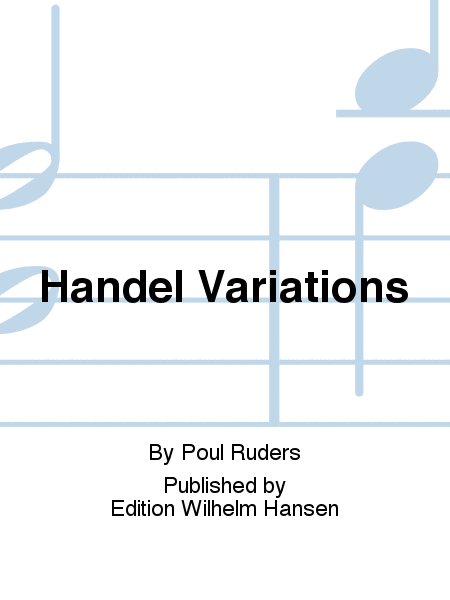Handel Variations
Details
Description
SKU: BT.WH31001
Composed by Poul Ruders. Classical. Score Only. Composed 2013. 196 pages. Edition Wilhelm Hansen #WH31001. Published by Edition Wilhelm Hansen (BT.WH31001).ISBN 9788759818534. English.
Poul Ruders' Handel Variations for Orchestra (2009) -
Ninety Symphonic Reflections on Eight Bars by Georg Friedrich Handel.
Commissioned by and dedicated to the Aarhus SymphonyOrchestra in celebration of their 75th anniversary 2010.
Premiered by The Aarhus Symphony Orchestra conducted by Giancarlo Andretta at the Aarhus Concert Hall, 14 January 2010.
Programme note
The short, feisty Bourrée from Handel´s famous Water Music (First Suite, in F major) has for some years been hovering at the back of my mind as possessing theperfectpotential for a series of variations. Not unlike the short 'morsel' by Henry Purcell (the witches Ho-ho-ho-chorus from the opera Dido and Aeneas), which kicks off the ten variations of my orchestral work Concerto in Pieces,the music per se is not particularly interesting, but it nevertheless grows on you and is difficult to get rid of. It is merely a handful of sequences (a technique much used in the Baroque era - a method in which the same motif isbeing shifted up and down in a specified order). Actually, it is only the first eight bars of the Bourrée which I haul through the wringer.
It would be obvious to assume, that Handel Variations make up asequel to Concerto in Pieces, but in spite of the similarity in character between the two chosen themes, the Handel Variations are far more symphonically coherent. There are no less than ninety (!) variations and each variation(they are relatively short, ranging from four up to forty-something bars) runs seamlessly into the next, creating a huge symphonic body of constantly changing colours. I set out with the original theme without interfering, but the'erosion' begins to gnaw away at the theme already from the first variation. Imagine a vast gallery of Handel portraits, in which Georg Friedrich appears, at first fully recognizable, but then the 'disfiguration' sets in, and.

 Share
Share